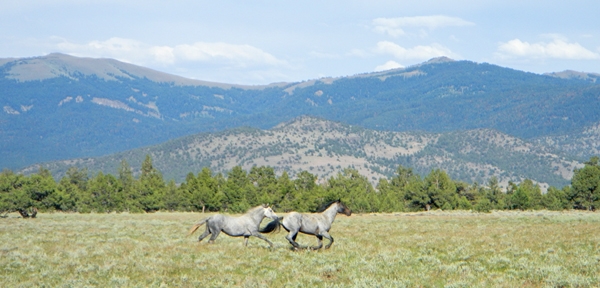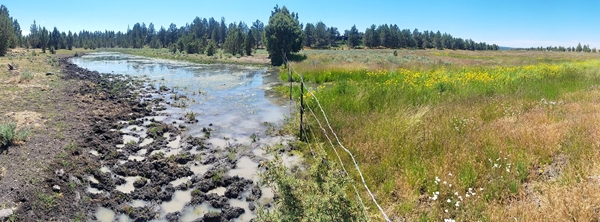Working with wild horses and water controversies in rural California
Watering holes can be hard to come by in the high desert of northeastern California. Pronghorn, deer, cattle, and wild horses are all visitors to the springs and ponds scattered across the often dry grasslands. The number of wild horses has jumped quickly in recent years, bringing a host of water-related challenges, and no small amount of controversy.
Laura Snell, a livestock and natural resource advisor with UC Agriculture and Natural Resources, knows the controversy well. She's been monitoring frequently visited water sources in the area for a couple of years. Her research shows that at times more than 70 percent of animal visits to springs are by wild horses, with cattle making up another 20 percent.
Wild horses, descended from domestic horses, are covered under a federal law focused on coexistence with livestock and wildlife. That has meant rounding up wild horses with some regularity because they have few natural predators and their populations grow quickly. However, legal and financial challenges have stalled wild horse management over the last few years.
As a result, in one part of the Modoc National Forest known as Devil's Garden, there are now around 3,000 wild horses in an area estimated to sustain only 200-400. While cattle tend to be closely monitored and rotated to different pastures, that is not the case for wild horses. Therefore, the rise in population is challenging for both livestock and ecosystem managers; horses crossing local highways are even becoming a challenge for transportation officials.
To better understand what has been happening on the land, Snell and her collaborators with the US Forest Service and, more recently, UC Davis, hike Modoc and Lassen counties installing wildlife monitoring cameras. Snell also measures vegetation and stream bank changes several times a year. The team is looking at impacts that include trampled habitat, reduced vegetation, and decreased water quality.
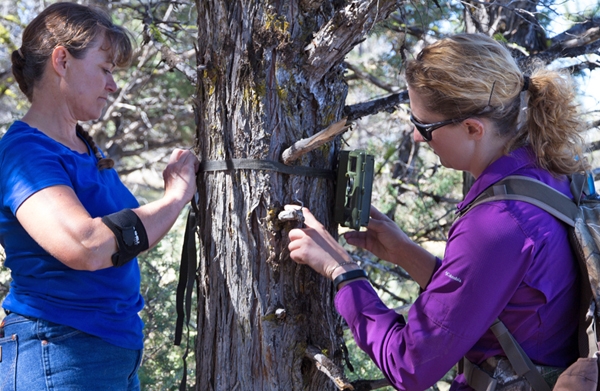
But, monitoring is only one part of the job. The other is navigating the human emotions attached to wild horses. From ranchers to wild horse advocates, and the whole spectrum between, people tend to have very strong feelings about the horses.
Wild horses also have direct implications for livelihoods in this rural area. Snell says, “Next year we'll have two ranchers who are not allowed to use their permitted allotments at all – and many more that will have proportional cuts – due to the large number of wild horses. These cuts affect our local economy and relationships with the government. And the cuts to cattle allotments still don't provide respite for degraded ecosystems.”
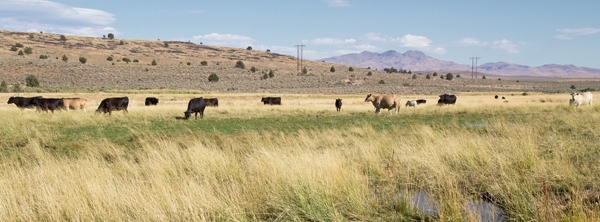
For Snell, engaging with wild horse issues has meant learning new skills to complement her scientific and technical expertise. She recently took a facilitation course to better prepare herself to guide meetings and help groups with differing opinions work together. She says, “I'm trying my best to listen first and then to focus on the best science available.”
Snell recently partnered with colleagues at the Modoc National Forest to foster dialogue between diverse groups concerned about wild horses. “Bringing people together who are on completely different sides of the issue and seeing them talk and find common ground can be really rewarding,” says Snell.
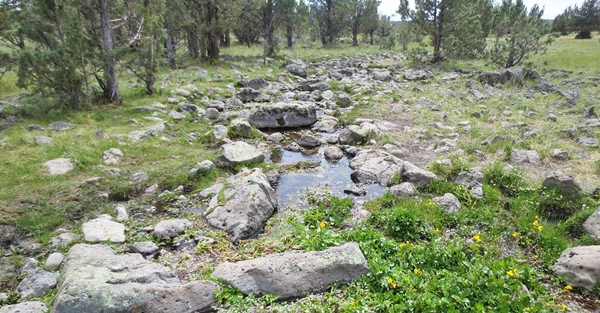
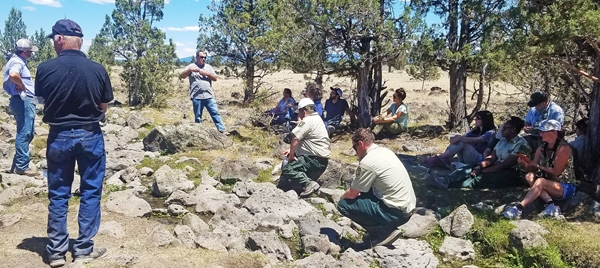
As the group sat at the spring and talked about the ecosystem and economic impacts of wild horses, emotions began to run high under the hot afternoon sun. On the walk back to the parking area, people had time to think. They then regrouped to talk about what they learned. It was clear that it was only the first conversation in one of many that would be needed, but it did allow for some new insights and relationship-building. Snell says she can sometimes leave these events a “bit frustrated and exhausted, but also encouraged to reduce misunderstandings around the research on these horses.”
“I think it's difficult to understand the complexity and scale of the wild horse issues in the western US. It is not just about horses, it's about rural economies, wildlife habitat, and multi-use public lands.” There is still a ways to go, but Snell is glad her research is relevant and timely, and that it is of direct use in public land management decisions.
